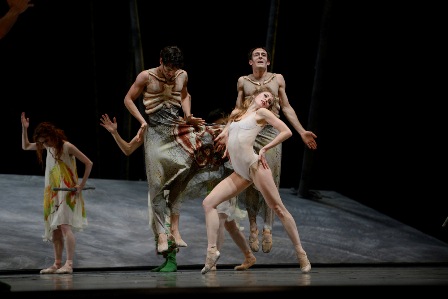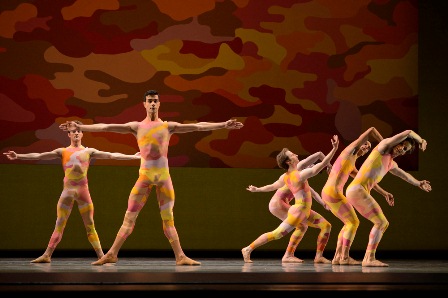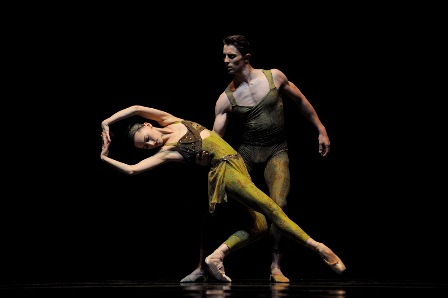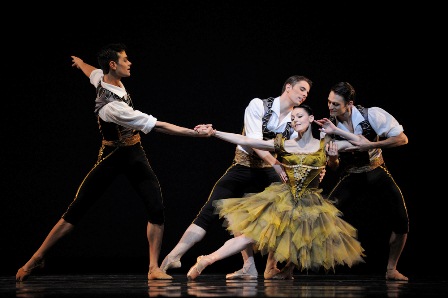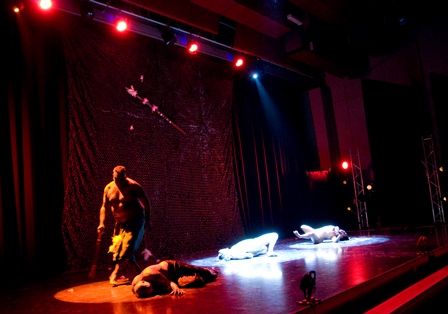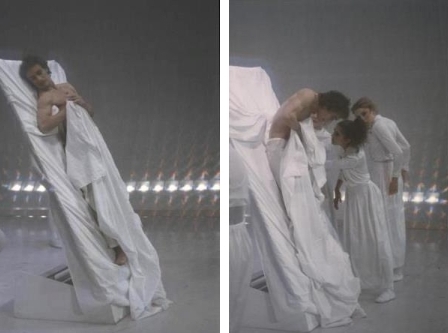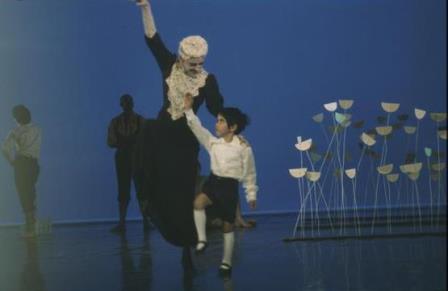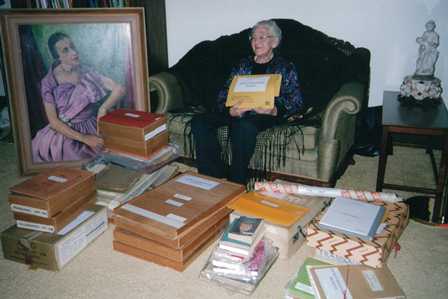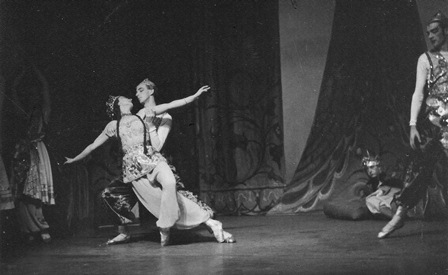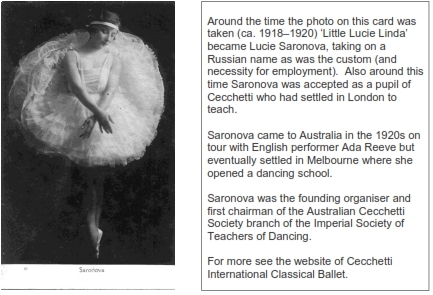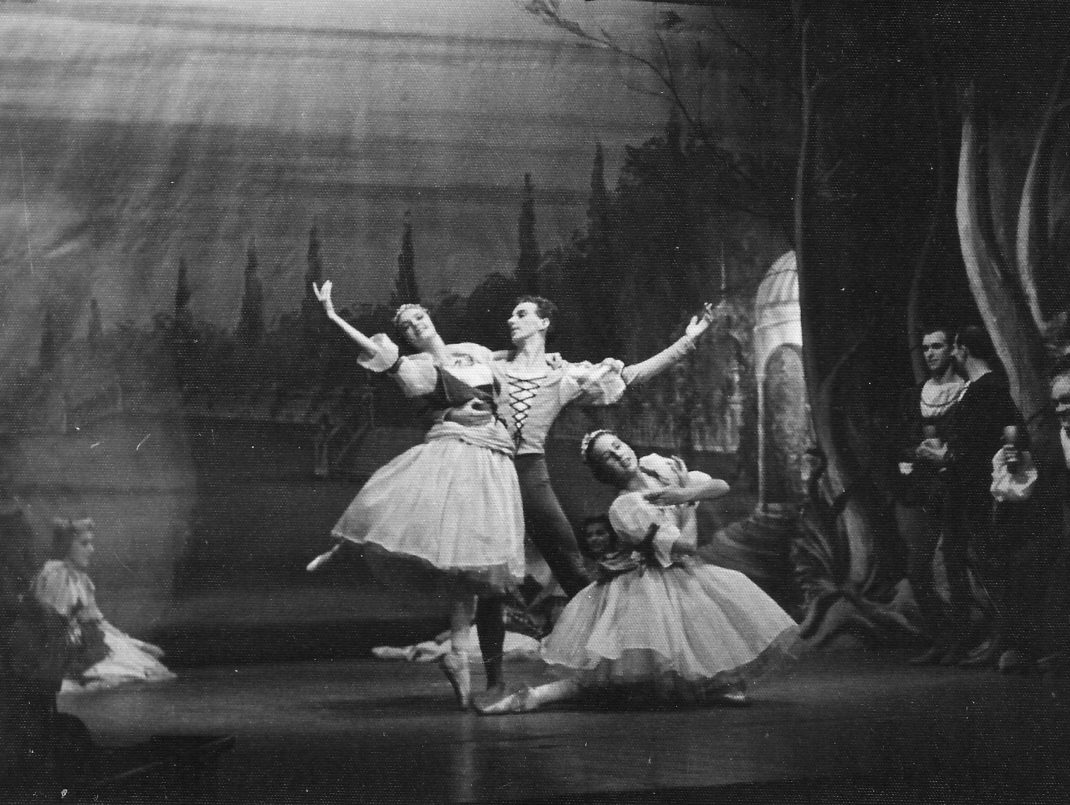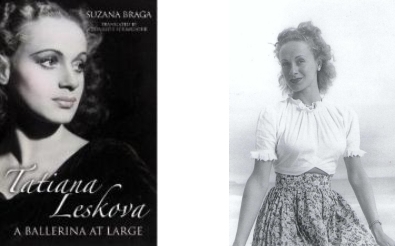21 March 2013, McCaw Hall, Seattle
This program was a particularly generous one from Peter Boal’s Pacific Northwest Ballet, consisting as it did of four works: George Balanchine’s Concerto Barocco, Paul Gibson’s Mozart Pieces, Ulysses Dove’s Dancing on the Front Porch of Heaven and Twyla Tharp’s In the Upper Room. It was also a diverse program showcasing a range of American choreographers, past and present.
I have to admit to being an Upper Room fan and recall with much pleasure the performances given of it by the Australian Ballet now more than a decade ago. So I was surprised by the interpretation given to it by dancers of Pacific Northwest Ballet and it made me ponder on the notion of a vernacular in dance, and also on the role of a personal style in dance. The standout dancer for me was Kiyon Gaines who, especially in the men’s trio towards the end of the work, looked like he was in another space, in the upper room as it were, so engrossed was he in the performance. To me he was the only dancer who really got the ascendancy of emotion and physicality that drives the work to its conclusion. Others put in personal tweaks of expression or added small technical eccentricities but didn’t give the appearance of being in the same show as their colleagues. All in all a bit of a disappointment.
Balanchine’s exquisite Concerto Barocco opened the program. It was nicely danced by the company who have a youthfulness that suits many Balanchine works, including this one, and whose training and heritage give them a particular feeling for the style. I especially admired the two leading ladies, Maria Chapman and Lesley Rausch, both of whom are elegant, long-limbed dancers and who used these attributes to advantage.
Paul Gibson’s Mozart Pieces is a development of an earlier piece made for a Pacific Northwest Ballet School performance. It is a series of showy episodes performed by seven men and two women. Several of the sections are danced to Mozart minuets and there is a certain inevitability to the choreography. But Gibson has counteracted what could have become a predictable work with some unexpected changes of movement and lots of variety in the way the arms and head are used. I enjoyed watching the leading male dancer, Karel Cruz. His feet and ankles seemed amazingly articulate and I could see so clearly how they held together perfectly in fifth in his double tours. This is perhaps a bit of an esoteric comment to make, but the way he executed those tours remains clearly fixed in my mind.
Ulysses Dove’s Dancing on the Front Porch of Heaven was made in response to Dove’s grief at the loss of friends and colleagues who died from complications associated with AIDS. Originally made on the Royal Swedish Ballet, it is set on three couples and is an unusual work in that it seems confrontingly static. Movements tend not to flow together or even be fluid within themselves. The six dancers periodically come together in a circle, which is also pretty much a static formation, before breaking apart. The whole might be seen as a fractured view of life and the relationships made within it. I found it hard to be emotionally involved so obvious was the movement metaphor.
This was my first viewing of a performance by Pacific Northwest Ballet since the company was in Australia in the 1990s for the Melbourne Festival. There were moments to be savoured but I would have loved to have been uplifted!
Michelle Potter, 24 March 2013
